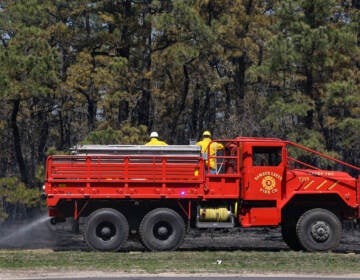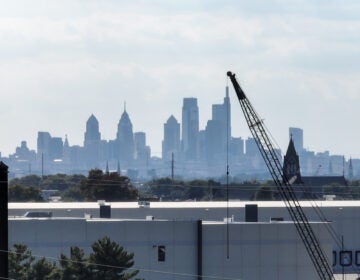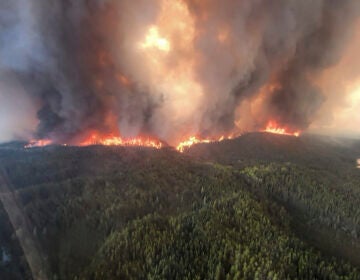Above-average rain is keeping New Jersey’s wildfire season calm, but don’t get complacent, officials say
Officials warn that a changing climate can spark a wildfire despite a wet couple of months.
Listen :52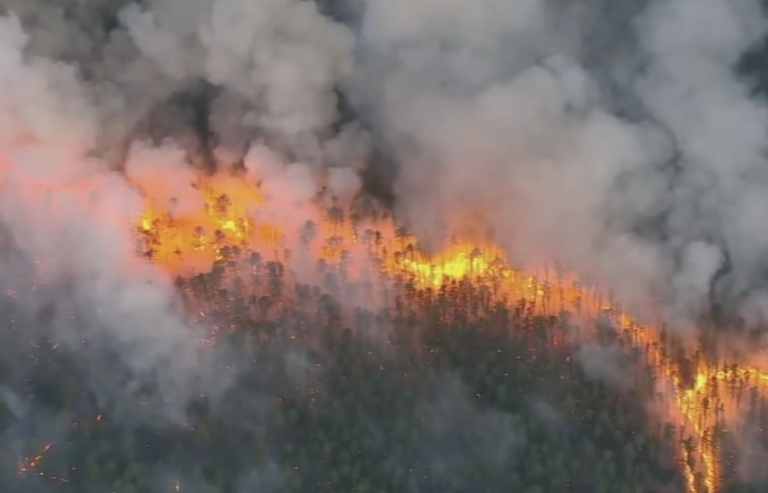
The New Jersey Forest Fire Service attempts to contain a wildfire in the Wharton State Forest in Burlington County in 2022. (6abc)
This story is part of the WHYY News Climate Desk, bringing you news and solutions for our changing region.
From the Poconos to the Jersey Shore to the mouth of the Delaware Bay, what do you want to know about climate change? What would you like us to cover? Get in touch.
New Jersey is faring better this fire season when compared to last year, thanks to above-average rainfall.
“We’ve had substantial rain [in] March. And now here we are starting off in April, and it’s been pretty wet,” said William Donnelly, state forest fire warden and Forest Fire Service Chief during a media update about the Garden State’s peak wildfire season.
However, Donnelly and other Department of Environmental Protection officials are urging residents to not become complacent.
“It only takes a day or two with the wind blowing and warmer temperatures,” Donnelly adds. “No matter how wet it was yesterday, by today, we could be having fires.”
Experts have said that climate change has extended New Jersey’s wildfire season, starting as early as mid-February and ending as late as early July. A report released by Climate Central last year found that the number of fire weather days has increased; ten days in North Jersey and four days in South Jersey. The state’s wildfire season used to span from mid-March to mid-May.
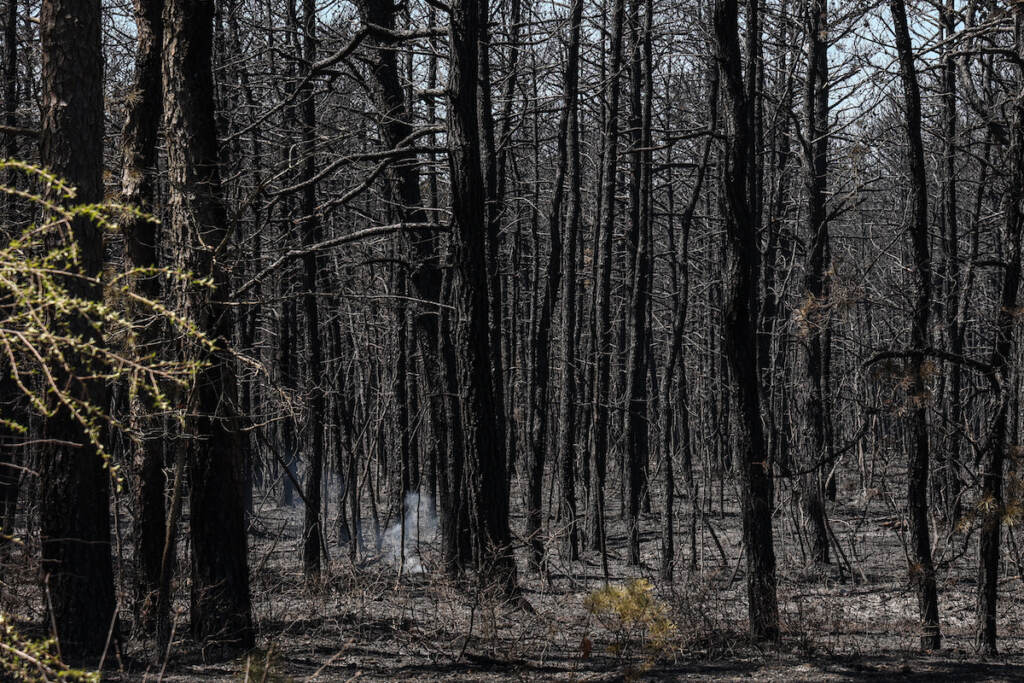
So far in 2024, 218 wildfires have ravaged 171 acres across the state. For the same time period last year, 358 wildfires consumed 970 acres. Last year was the most active fire season in more than a decade, with 1,193 wildfires burning 18,043 acres.
Donnelly said this year’s season is starting slightly slower, but “that’s all subject to change.”
“Recognizing the changing climate, we increasingly see dry conditions between heavy rainfalls and what we have come to know as flash droughts,” said John Cecil, Assistant Commissioner for State Parks, Forests & Historic Sites.
Officials are asking residents to be proactive in preventing wildfires by not leaving campfires unattended and being careful while discarding cigarettes or flammable materials. The department is also promoting an app for kids to learn about wildfire safety called Smokey’s Scouts.
“Consider that 99% of all wildfires are started by people, whether accidentally or intentionally,” said Greg McLaughlin, administrator for forests and natural lands, adding unlike other natural disasters – like hurricanes, tornadoes and storms — wildfires are unpredictable.
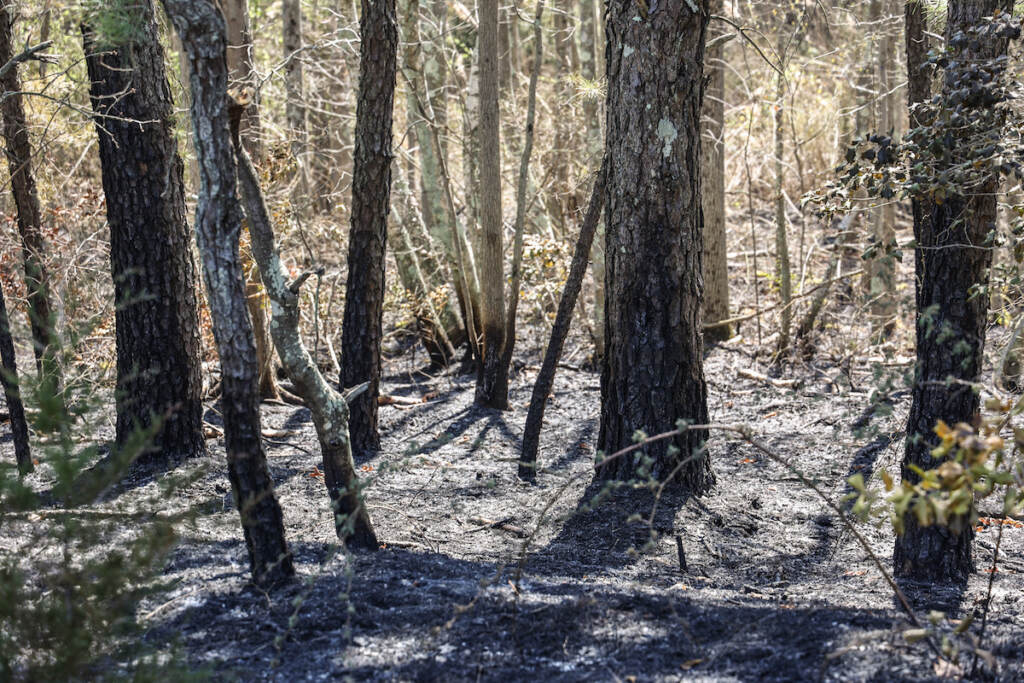
“It’s not necessarily a matter of if it’s going to happen. It’s a matter of when it’s going to happen,” he said.
In addition to its fire danger dashboard, officials launched a wildfire assessment portal this year to help residents and municipal governments determine their wildfire risk.
“And there’s numerous tools built within that talks about what can be done to improve and mitigate some of that risk that they may find,” McLaughlin said.

Get daily updates from WHYY News!
WHYY is your source for fact-based, in-depth journalism and information. As a nonprofit organization, we rely on financial support from readers like you. Please give today.



